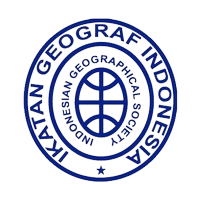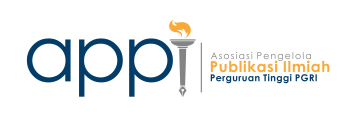Author Guidelines
The title
No more than 15 words/characters written in capital, bold, Times News Roman font (TNR) 16, center alignment, spacing 1.15.
The author, ownership, and e-mail
The author's name is without a title, the name of the institution (ownership), and e-mail corresponds to the author.
Abstract
Abstracts provide a comprehensive overview of research activities in a concise manner. The abstract consists of 100 - 150 words typed in 1 paragraph, 1 spaced with Times New Roman font size 11. Written in Indonesian, English and Arabic. The Abstract section contains the main points of research that will be studied such as research objectives, problem solving methods, as well as research results and discussions.
Keyword
Write 3 -5 words (can be phrases) that really form the core of the article/research.
Manuscript
The manuscript comes from the form of research (literature review and field). It consists of a maximum of 20 pages and minimum 10 pages or consisting of 5000 - 8000 words written in a format Times News Roman (TNR) 12 andjustify alignment. The manuscript is organized into three sections: Introduction, Content/ Discussion, Conclusion, and References.
Introduction:
This part contains the background, the subject matter, the importance of the themes discussed, and the purpose of the subject matter. In this section, it is advisable to avoid a detailed explanation of the theoretical basis, the problem statement, and so on as published in paper/thesis/dissertation. The introduction is written in bold with no heading.
Methods
This part explains how the research is conducted, research design, data collecting techniques, instrument development, provide sufficient details of the methods including the ethical conduct and data analysis techniques.
Results and Discussion:
Results state the major findings of the research instead of providing data in great detail. Results should be clear, concise and can be reported on texts or graphics. Please provide some introduction for the information presented on tables or images. These are composed of a research result as displayed as words, tables, figure, and photographs. The limitation of using grapics and photos will be appreciated. However, it needs to be displayed if it can describe a better explanation for research result. All of Figures and tables should be given continuing numbers and must be referred in the article. The analysis should answer the gap stated. The qualitative data, e.g. interview results, is discussed in paragraphs.
The discussion should explore the significance of the results of the study. The references contained in the introduction should not be re-written in the discussion. A comparison to the previous studies should be presented. The following components should be covered in discussion: How do your results relate to the original question or objectives outlined in the background section (what)? Do you provide interpretation scientifically for each of your results or findings presented (why)? Are your results consistent with what other investigators have reported (what else)? Or are there any differences?
Supporting Instrument
Supporting instruments may include images (graphics/charts) or tables. Figure/table is recommended in black and white, and if it is made in color, it must be ensured that they can be read clearly when text is printed in black and white. Figure/table must be numbered and concise information on it to the format; centered, TNR 10, spacing 1. The content is written with TNR 10 format, spacing 1.
Conclusion
The conclusions arewritten to direct the reader to get the important things that are not shallow and narrow. The conclusion is written with bold and no heading.
Citations are enclosed in intra-text with references (name, year, page). Example: (Rush, 2014: 56).
The bibliography should use reference management applications such as Mendeley, EndNote,Zotero, or the other. The format of writing that used in the journal of Engineering is in accordance with the format of APA 6th Edition (American Psychological Association).
Book
Rusli, Ris'an. (2014). Tasawuf dan Tarekat. Jakarta: Raja Grafindo Persada.
Magazine/Scientific Journal
Bekker, J. G., Craig, I. K., & Pistorius, P. C. (1999). Modeling and Simulation of Arc Furnace Process. ISIJ International, 39(1), 23–32.
Prosiding Seminar
Roeva, O. (2012). Real-World Applications of Genetic Algorithm. In International Conference on Chemical and Material Engineering (pp. 25–30). Semarang, Indonesia: Department of Chemical Engineering, Diponegoro University.
Dissertation/Thesis
Istadi, I. (2006). Development of A Hybrid Artificial Neural Network – Genetic Algorithm for Modelling and Optimization of Dielectric-Barrier Discharge Plasma Reactor. PhD Thesis. Universiti Teknologi Malaysia.
HandBook
Hovmand, S. (1995). Fluidized Bed Drying. In Mujumdar, A.S. (Ed.) Handbook of Industrial Drying (pp.195-248). 2nd Ed. New York: Marcel Dekker.
Newspaper
Pitnov, B. (2002). "Sekolah Unggulan ataukah Sekolah Pengunggulan?" Majapahit Pos, hlm. 4 dan 11.
Translated Book
Ari, D., Jacob, & Razavieh, A. (1976). Pengantar Penelitian Pendidikan. Terjemahan oleh Arief Furchan. 1982. Surabaya: Usaha Nasional.
Internet
Kumaidi. (1998). "Pengukuran Bekal Awal Belajar dan Pengembangan Tesnya". Jurnal Ilmu Pendidikan. (Online), Jilid 5, No. 4, (http://malang.ac.id, diakses 20 Januari 2000)











